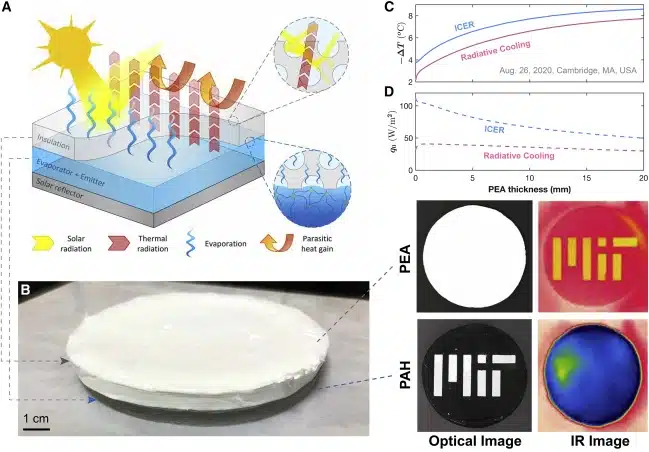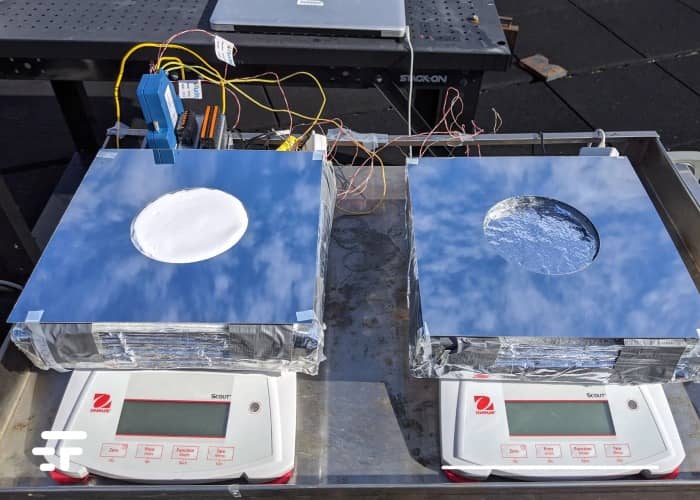In countries where cooling systems are most needed, the infrastructure to power such setups often lacks. A new system could help in this regard, keeping items and foods fresh with multiple cooling effects without using electricity. The research at the Massachusetts Institute of Technology (MIT) is led by Zhengmao Lu, Arny Leroy, Jeffrey Grossman, Evelyn Wang, Lenan Zhang and Jatin Patil. It is described in an article published in the magazine Cell Reports Physical Science (I link it here).
A refrigerating “panel”.
The system, designed by MIT on the basis of previous research, combines evaporative cooling, radiative cooling and thermal insulation together. He can create up to 10,5 ° C cooling compared to ambient temperature, and is presented in the form of a panel composed of three layers of different materials.
The panel can be placed on/around something that needs to stay fresh, such as a box of perishable items (food or medicine). According to MIT, the technology could “enable safe food storage for about 40% longer in high humidity conditions” or “triple the safe storage time in drought conditions.” It could also be used to cool water used by air conditioners, allowing the device to use less energy but remain equally effective.

How MIT's cooling system that doesn't use electricity is made
The bottom layer of the system is made of a mirror-like material that reflects incoming sunlight. This prevents the infrared radiation of the sun's rays from heating the covered object. At the center is a porous hydrogel, composed mainly of water. When liquid water is heated, it evaporates into vapor that rises until it meets and passes through the top layer, where it exits through the pores of this final barrier.
The top layer is made of aerogel, which contains a high concentration of air pockets within its polyethylene cavities. By allowing water vapor and reflected infrared rays to pass through, it provides both evaporative and radiative cooling.
The challenges to face
The crux of the whole system seems to be the airgel. Not only does it provide cooling, but it also acts as an insulating layer by preventing ambient heat from reaching the object underneath. And it's reflective, too: almost like the mirrored bottom layer.
Just one problem? It is quite expensive to produce with current methods: a cheaper production chain must be developed, and engineers at MIT are already studying how to do it. Furthermore, it would be the only hitch in the whole system, because the other materials that compose it are all available and cheap.
General maintenance of this off-grid “fridge” would consist solely of adding more water to the hydrogel. An operation to be performed once every 4 days in very dry and hot environments, and just once a month in more humid regions.
In summary: This new cooling system from MIT is very promising. While it is being optimized, however, we will have to keep the food cold the old fashioned way: by placing it in the refrigerator. Blessed bills.


